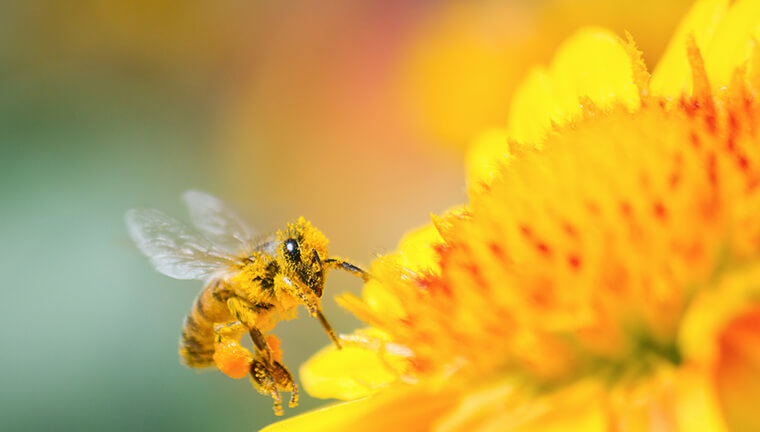 Back to the Be Inspired Blog
Back to the Be Inspired Blog

Spring Time: How To Get Your Garden Ready
It is almost spring! Are you excited? I’m sure you’re getting antsy to get out in your garden and get your hands dirty.
While you wait for spring, there’s a little bit of work that can be done now, which will make it easier and more enjoyable when the weather warms up because most of the “chores” will already be completed.
Keep reading for activities to start in your garden now as you wait for spring to arrive.
5 Ways to Get Your Garden Ready for Spring
Depending on the shape of your garden, there may be a lot to do, even more so if winter was harsh on your yard.
Here is a helpful list of tasks Real Simple recommends; reference it as you prepare your garden for spring:
- Start Cleaning Up Debris
- Get Your Garden Tools Ready
- Work on Your Soil
- Get Your Plan Ready
- Maintain
 Soil Preparation for Spring
Soil Preparation for Spring
Now is the time to start working on your soil. Even if you’re not sure what you want to plant yet (planning is a process), you can still get your garden space ready.
Tilling, or turning, the soil is an important activity to begin now. It is beneficial anywhere in your yard or plant beds as soil can compact over time, which leaches the nutrients out of the soil - especially if amendments or composts haven’t been added for a while. We also recommend adding chicken manure, steer manure or your favorite compost to help your garden thrive this spring.
Additional Reasons to Prepare Your Soil:
- Increased Vitamin D production – While you enjoy some rays while tilling your soil, your body also enjoys increased Vitamin D production, which boosts your metabolism and enhances your mood.
- It’s a family affair – This is a perfect opportunity to teach your family what it takes to grow a happy and healthy garden—from the beginning. What are the side effects? Dirty hands, in addition to a growing appreciation for all things green and time outdoors with your family!
- A feeling of accomplishment – Show that soil who’s boss and do something that makes you feel productive.
- Out-do your neighbors – Be the first to get out there. Show that neighbor who always rakes up their leaves first, that spring is your time.
- Fresh air – Enough said! Take a big breath and breathe deep.
As with other plants, now is the time to prepare for your spring vegetable garden; in fact, you can get some seeds planted now! Here’s a great list made by AccuWeather so you know where to begin:
- Lettuce
- Arugula
- Carrots
- Beets
- Radishes
Getting Your Vegetable Garden Ready for Spring: Indoor Plants
It’s time to head indoors! The following vegetables need a little extra care and should be started in side.
- Kale
- Broccoli
- Cauliflower
- Tomatoes
 This is one of the most popular vegetables to grow in the garden in America! After starting these in your
home, “Transplants should grow 4-6 inches in about two months before moving them into the garden.”
This is one of the most popular vegetables to grow in the garden in America! After starting these in your
home, “Transplants should grow 4-6 inches in about two months before moving them into the garden.”
- Eggplant
How to Use Cover Crops for Spring Gardening
Cover crops are perfect for helping your garden thrive and succeed. Here is some helpful information to understand what cover crops are and how to get started in your garden.
What Are Cover Crops?
Cover crops feed the soil by being tilled under once properly matured. While growing, they reduce weeds, control erosion and attract pollinating insects. Tilled under, plant material breaks up heavy soils, improving soil fertility and structure to give you a better harvest. Cover crops improve soil structure, water retention and drainage with organic matter. Earthworms and other microorganisms that enhance decomposition love feeding on cover crops; they keep soil healthy. Your plants are naturally stronger and better protected against disease and changes due to weather and watering if soil is healthy.
4 Benefits of Cover Crops
- Loosen Compacted Soil
- Balance Nutrients
*Fava Beans as a cover crop are most beneficial when tilled under prior to beans forming; however, you can harvest the plant and prune back (often yielding a second harvest) then till in, still getting the benefit of organic matter, though with less nitrogen fixing.
- Help Control Weeds
- Attract Beneficial Insects
4 Steps to Planting a Cover Crop
- Prepare as for a planting bed: weed the area, break up large soil clods and add planting mix
- Select your cover crop depending on the needs of your garden
- Water as needed depending on cover crop and recent rains
- In late winter, prune back to a few inches above ground and allow roots to decompose or, if plants are tender enough, till plants under and allow to break down to supplement the soil
Spring will be here before we know it – now is the time to prepare for it! You can get your garden ready by cleaning it up, making a plan, working on your soil, planting seasonal vegetables and covering crops.
Let us know what you’re excited to grow in your garden this spring!
About SummerWinds Nursery: SummerWinds Garden Centers is a leading high-end retailer of garden and nursery products. Headquartered in Boise, Idaho, SummerWinds operates retail nurseries in the greater Phoenix, Arizona area, and in Silicon Valley, California, making it one of the largest independent retail nursery companies in the west. SummerWinds appeals to both the serious and casual gardeners, with a broad selection of premium gardening products and a friendly and knowledgeable staff.

